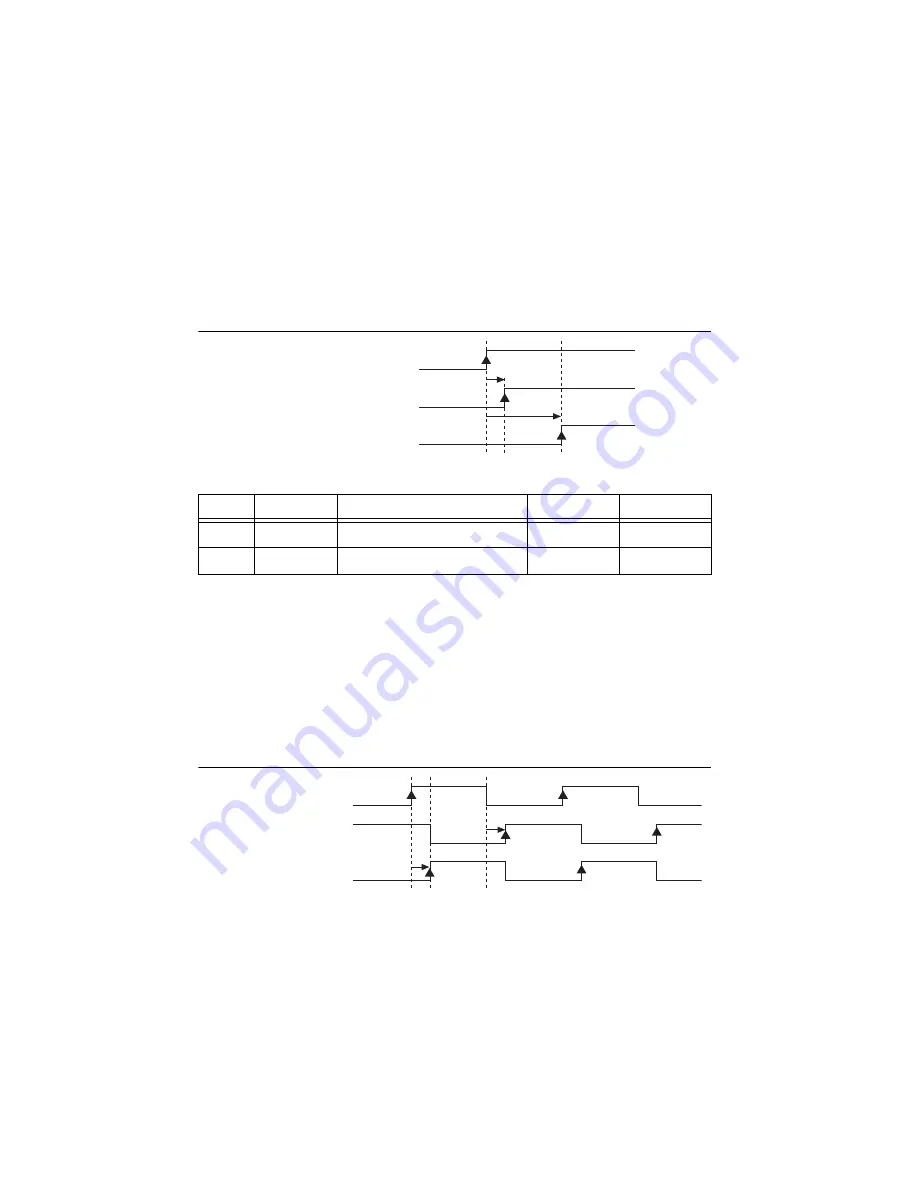
B-22
|
ni.com
Appendix B
Timing Diagrams
Internal Analog Output Timing
The analog output timer has two internal clocks that are referenced—Sample Clock Timebase
and Sync Sample Clock Timebase. How they are generated depends on how the analog output
timer is configured. If the analog output timing engine is configured to operate with an external
Sample Clock, analog output internal clock timing can be derived from Table B-13.
Figure B-24.
External Update Source Clock Insertions Timing Diagram
If the Sample Clock is being generated by dividing down the Sample Clock Timebase, the analog
output generation is timed from the output of the UI counter. The signal Sample Clock Timebase
can be an external signal. When the analog output timing engine operates in this mode, it is
assumed that the source signal for the Sample Clock timebase is a free-running clock, so the
Sync Sample Clock Timebase is the inverted version of Sample Clock Timebase. Configuring
the analog output timing engine for rising edge operation will cause the external signals to be
synchronized on the falling edge of the Sample Clock Timebase, which corresponds to the rising
edge of Sync Sample Clock Timebase.
Figure B-25.
Sample Clock Timebase and the Sync Sample Clock Timebase
Timing Diagram
Table B-13.
External Update Source Clock Insertions Timing
Time
From
To
Min (ns)
Max (ns)
t
2
Signal_i
Sample Clock Timebase
11.6
30.0
t
3
Signal_i
Sync Sample Clock Timebase
1.5
7.0
Signal_i
Sample Clock Timebase
Sync Sample Clock Timebase
t
2
t
3
Signal_i
Sample Clock Timebase
Sync Sample Clock Timebase
t
5
t
4
Artisan Technology Group - Quality Instrumentation ... Guaranteed | (888) 88-SOURCE | www.artisantg.com
















































